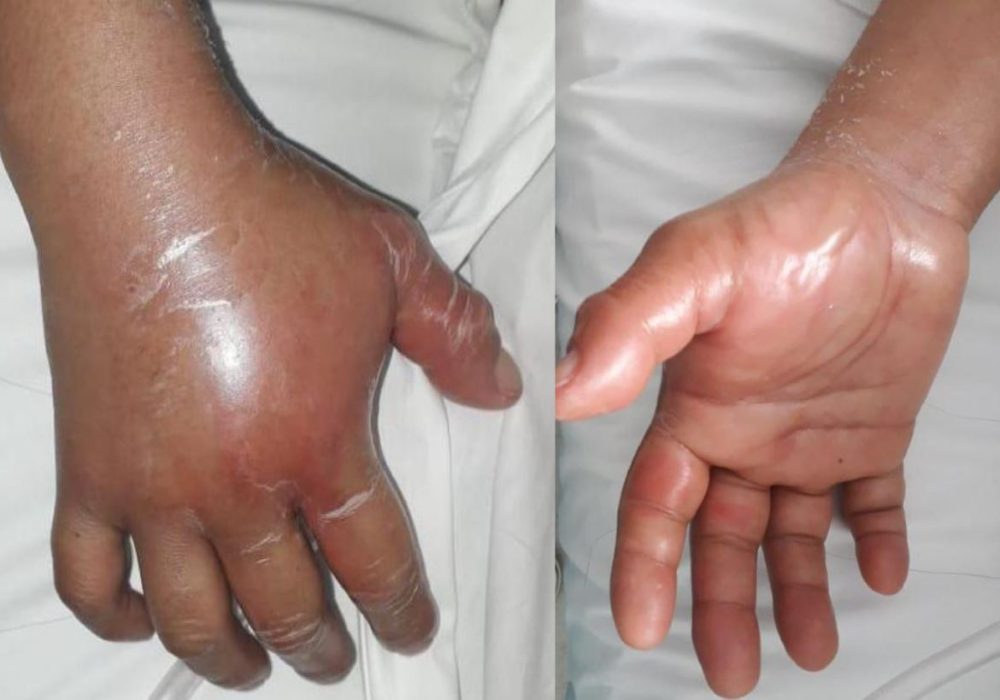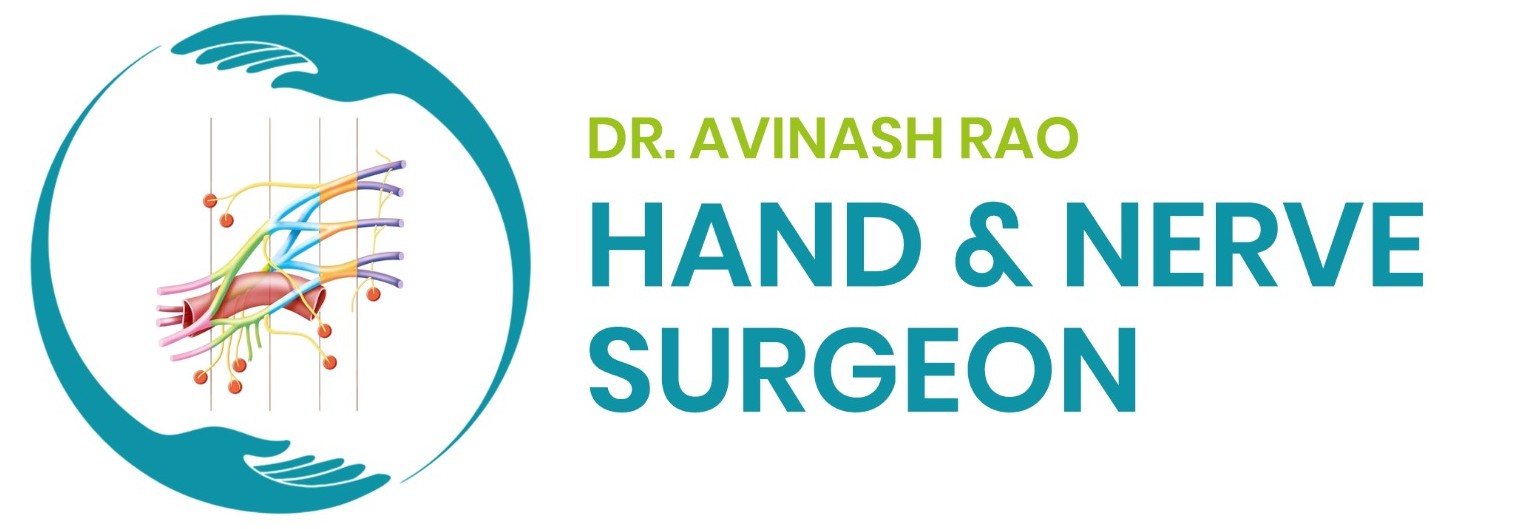
What is Compartment Syndrome?
Compartment Syndrome is a painful buildup of pressure around your muscles. Acute compartment syndrome is a medical emergency that happens after severe injuries or as a surgery complication. Chronic compartment syndrome happens over time when you exercise too hard or too often. You can usually treat chronic compartment syndrome by tweaking your workout routine.
Compartment syndrome happens when there’s too much pressure around your muscles. The pressure restricts (reduces) the flow of blood, fresh oxygen and nutrients to your muscles and nerves. Compartment syndrome is extremely painful.
A “compartment” is the medical term for a group of muscles, nerves and blood vessels. Compartments are covered by a fascia — a thin, firm membrane. Compartment syndrome happens when extra pressure builds up inside a compartment and your muscles press against the fascia more than they should.
Compartment syndrome can happen to any muscle group, but it’s most common in your:
- Legs, especially your lower legs.
- Arms, including your hands and wrists.
- Feet.
- Abdomen (belly).
- Buttocks (butt).
Types of compartment syndrome
There are two types of compartment syndrome:
- Acute compartment syndrome: Acute compartment syndrome happens suddenly (usually after a severe injury). It’s a medical emergency. Go to the emergency room right away if you think you have acute compartment syndrome. If it’s not treated immediately, acute compartment syndrome can cause permanent muscle damage, paralysis or death.
- Chronic compartment syndrome: Chronic (long-term) compartment syndrome typically builds up slowly over time, especially after intense physical activities or exercise. Chronic compartment syndrome usually isn’t an emergency, but it can still be extremely painful. Healthcare providers sometimes call it exertional compartment syndrome.
Symptoms and Causes
What are the signs and symptoms of compartment syndrome?
The most common signs and symptoms of compartment syndrome include:
HAND PROBLEMS
- Fractures and Dislocations in Hand
- Metacarpal & Phalangeal fractures
- Ligamentous injuries of fingers & Thumb
- Dislocations of finger joints
- Swellings of Fingers & Hand
- Compartment Syndrome
- Mucous cyst
- Ganglion cyst / Retinacular Cyst
- GCT of Tendon sheath
- Enchondroma (Benign Bone Tumor)
- Squamous cell carcinoma
- Dupuytrens Contracture
- Post Traumatic Contracture
- Post Burn Contractures of fingers
- Volkmann Ischemic Contracture
- Stiff Fingers & CRPS
- Stiff joints of fingers and hand
- Osteoarthritis of Hand
- Finger joint arthritis
- Thumb Basal joint arthritis
- Acute Infections of Hand
- Finger Pulp Infection (Felon)
- Nail Fold Infection (Paronychia)
- Finger Infection (Flexor Tenosynovitis)
- Palm Infection (Deep Spaces of Hand infection)
- Joint Infections in Hand & Wrist (Septic Arthritis)
- Human & Animal bite injuries to hand
- Diabetic Hand Infections
- Bacterial / Fungal / Atypical Hand infections in immunocompromised patients
- Subungual Hematoma
- Nail bed injury
- Nail Deformities
- Glomus tumor
Make Your Appointment
- Visible bulging or swelling around a muscle.
- Muscle pain (more severe than the usual soreness you’d feel after intense activity).
- Tightness.
- Severe pain when stretching.
- Numbness.
- Tingling or a burning feeling under your skin (paresthesia).
- Feeling like your muscle is fuller, firmer or bigger than usual.
What is the main cause of compartment syndrome?
Compartment syndrome happens when an injury or repeated stress causes swelling and bleeding inside a muscle compartment. If the pressure builds too much, your muscles press against the fascia that holds them in place.
The fascia has some natural ability to stretch and expand, but not much. If pressure keeps building in the compartment, the fascia eventually runs out of room and starts squeezing against your muscles and nerves. This squeezing is what causes pain and other symptoms.
If you’ve ever worn a pair of shoes that’s a size or two too small, you’ve probably experienced a similar buildup of pressure. Early in the day, your feet may fit comfortably in the shoes. But as the day goes on and you walk and move, your feet naturally start to swell. By the end of the day, those shoes that felt “fine enough” in the morning may feel like they’re vice grips on your feet. Compartment syndrome is much more dangerous because that kind of pressure happens inside your body.
What causes compartment syndrome depends on which type you have.
Acute compartment syndrome causes
Severe injuries are the most common cause of acute compartment syndrome, including:
- Car accidents.
- Falling from a high place (like off a roof or ladder).
- Bone fractures (broken bones).
- Crushing injuries (when something heavy falls on you).
- Severe muscle contusions.
- Sports injuries.
- Complications after surgery.
- Complications from wearing a cast or splint that’s too tight.
- Prolonged pressure on an arm or leg after not moving for several hours at a time.
Chronic compartment syndrome causes
Chronic (exertional) compartment syndrome usually builds up over time. Frequent, intense exercise is the most common cause. Doing the same kind of workout or training can put repeated stress on the same muscles and cause a pressure build-up. Some common causes include:
- Running.
- Biking.
- Swimming.
- Weightlifting.
It’s less common, but doing a repetitive motion at work or for a hobby can also cause chronic compartment syndrome.
What are the risk factors?
Anyone can develop acute compartment syndrome because it happens after sudden injuries.
Athletes and people with physically demanding jobs are more likely to overtrain or overwork their muscles and develop chronic compartment syndrome.
People with hemophilia and other types of blood disorders may have an increased risk.
What are compartment syndrome complications?
Compartment syndrome can cause serious complications.
If the pressure in a muscle compartment gets too high, your tissues won’t get enough fresh blood, oxygen and nutrients. This can lead to tissue death (necrosis), which causes permanent damage.
Acute compartment syndrome can be fatal if it’s not treated right away. Go to the emergency room if you think you have acute compartment syndrome.
How do providers diagnose compartment syndrome?
A healthcare provider will diagnose compartment syndrome with a physical exam and tests. They’ll examine your muscles and the area around them. They might first rule out other issues (like tendinitis or shin splints) that can cause similar symptoms.
Tell your provider what you were doing when you first noticed pain and other symptoms. Tell them if certain activities seem to make your symptoms better or worse.
Compartment syndrome tests
Your provider may use a few tests to diagnose compartment syndrome, including:
- X-ray: An X-ray will help rule out bone fractures and other injuries.
- Compartment pressure measurement test: Your provider will insert a needle into a few different places in your muscle compartment. A machine attached to the needle will read the pressure inside your body. This test might be painful. Tell your provider how much it hurts when they insert the needle, and if any places hurt more than others.
- Repeat pressure test: If your provider thinks you have chronic compartment syndrome, they may repeat a compartment pressure test after you exercise. They’ll compare the results to the pressure levels before you exercised.
What are compartment syndrome treatments?
How providers treat compartment syndrome depends on which type you have.
Acute compartment syndrome is a medical emergency that needs immediate surgery. Chronic compartment syndrome usually gets better after you tweak your exercise habits or routine.
Acute compartment syndrome treatment
A surgeon will perform an operation called a fasciotomy. They’ll make an incision (cut) through your skin and fascia to relieve the pressure in your affected muscle compartment.
They’ll close the incision after the swelling and pressure go away. Sometimes, that can’t happen immediately. Your surgeon may do a skin graft, taking skin from another area of your body to cover the incision.
Chronic compartment syndrome treatment
Chronic (exertional) compartment syndrome usually gets better and goes away if you rest your affected muscle compartments and avoid overusing them in the future. Your provider will suggest treatments to manage your symptoms and prevent pressure buildup, including:
- Medications: Anti-inflammatory medications like over-the-counter NSAIDs or acetaminophen reduce inflammation and relieve pain. Don’t take these medications for more than 10 days in a row without talking to your provider.
- Changing your exercise routine: You might need to try different, lower-impact exercises. Some people with compartment syndrome switch to cross-training. Cross-training is mixing up which type of exercise you do instead of working out the same way or with the same activity each time. You might also have to change where you exercise — running on a softer track instead of concrete, for example.
- Physical therapy: A physical therapist will help you increase strength and flexibility in your affected muscles. They’ll also show you ways to modify your exercises to prevent stress and pressure buildup.
- Orthotics: Orthotics are shoe inserts that support your feet and legs. They might help people with compartment syndrome in their legs. Your provider will tell you which type of orthotics will work best.
You may need a fasciotomy if other treatments don’t work or the compartment syndrome comes back (recurs). Your provider will let you know when you should consider surgery and what to expect.
How soon after treatment will I feel better?
If you have acute compartment syndrome, you should feel better after you’ve recovered from the fasciotomy. Most people need to rest for around a month before using those muscles. Your surgeon will tell you when it’s safe to start moving again, and how long you should wait before resuming physical activities.
Managing chronic compartment syndrome may take longer, especially at first. It might take a few months to find a combination of treatments and exercise modifications that manage your symptoms. Your symptoms should improve gradually as you find ways to avoid putting too much pressure on your affected muscles.
